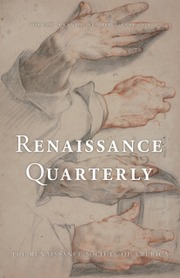Article contents
Displays of Sugar Sculpture and the Collection of Antiquities in Late Renaissance Venice
Published online by Cambridge University Press: 09 July 2020
Abstract
This article examines the sugar sculptures created for a ball in honor of Henri III of France in the Palazzo Ducale in Venice in 1574. The first part discusses the production and display of the statuettes. In the next section, the setting of the sugar sculptures is examined in the context of the collation prepared for the king in Palazzo Grimani in Santa Maria Formosa, which contains the city's greatest collection of antiquities. Finally, the article examines the possible relationships between sugar statuettes and ancient sculptures and their use in crafting the image of Venice as a new Rome.
Information
- Type
- Articles
- Information
- Copyright
- Copyright © The Author(s) 2020. Published by the Renaissance Society of America
Footnotes
The research for this article was supported by a Marie Curie Fellowship held at the Warburg Institute. A preliminary version of this study was presented at the History of Art seminar organized by Paul Taylor and Rembrandt Duits at the Warburg Institute in 2014. I am grateful to Charles Hope for his encouragement. I would like also to thank the editors and anonymous reader at Renaissance Quarterly for their helpful suggestions. Unless otherwise stated, all translations are my own.
References
BIBLIOGRAPHY
- 2
- Cited by


